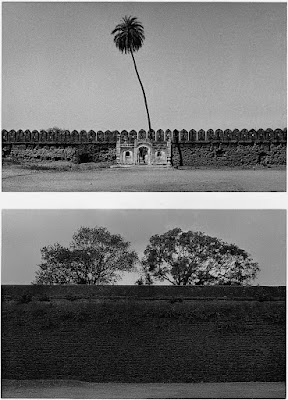CIRCLE-24 member: Jyoti BHATT - India
JYOTI BHATT, India, born March 12, 1934.
Studied painting and print making in India 1950-1959, Italy-1961-62,U.S.A. - 1964-66 under the Indian and Italian Government scholarships, Fullbright grant and J.D.R. III fund award, U.S.A.
Paintings, Graphic Prints and Photographs are shown in India and abroad in form of one man shows, group shows and participation in national and international art exhibitions between 1954 and 1992 and are in public and private collections including: -MOMA - New York, -Smithsonian Institute, U.S.A., -Ufizzi Gallery - Florence (Italy), -National Gallery of Modern Art, -National Academy of Fine Arts and Art Heritage Archive in New Delhi and several museums in India.
I have been awarded several prizes including: National Awards, Gold Plaque 1957 and 1963. First Prize for Graphic Print - Gujarat State 1967, and for Indian Postal Stamp Design Contest, 1972. Gold Medal at International Graphic Print Biennale, Italy (1971), World Photo Contest at Photokina-Germany-1978, Grand Prix at Asian Cultural Centre for Unesco'a Photo contest Japan. etc.
Have made several murals for public, governmental and industrial concerns including : Parliament House-New Delhi, Air India, Unesco Exhibition, M.S.University etc. in India. Have been photographically recording living folk and tribal art traditions in India since 1967. Occasionally have photographed for Indian Universities, National Academy for Fine Arts, National Museum of man. National Handloom and Handicrafts Museum.
Some of the photographs are shown as a part of group shows in various western countries and in Japan during programmes related to festival of India (1902-92) and are published in catalogues, books and magazines.
I have curated two thematic photography shows (1979 and 199D) and worked as the commissioner for the First International Print Biennale in India 1989 and Indian Graphic Print show in Cuba 1982.
Teaching painting at University of Baroda and Heading the Department of Painting. Have asked the University for voluntary retirement from August 1992, to be able to devote full time to documentation of folk and tribal Arts in India.
CIRCLE-24 -about Jyothi BHATT ..
Made way before computer- and Photoshop possibilities!
These photographs were part of 'the Other Way of Seeing', exhibition on the indian way of visualising in photography.
Teacher of Fine Art and Photography, Artist. For the last 20 years he has been documenting the living art traditions and art forms of tribal and village India.
Bhatt moved from a cubist influence in his early work to a lighthearted and colorful Pop art that often drew its imagery from traditional Indian folk designs. Though Bhatt worked in a variety of mediums, including watercolors and oils, it is his printmaking that ultimately garnered him the most attention. In 1966 Bhatt returned to M.S.U. Baroda with a thorough knowledge of the intaglio process that he had gained at the Pratt Institute at Brooklyn in New York. It was partially Bhatt’s enthusiasm for intaglio that caused other artists such as Jeram Patel, Bhupen Khakhar and Gulammohammed Sheikh, to take up the same process. Bhatt, and his compatriots at the Faculty of Fine Arts in Baroda, soon came to be known as "The Baroda School" of Indian art.
Late in the 1960s, Bhatt was asked to take photographs of Gujarati folk art. Initially, this work was done for a seminar, but it soon became one of the artist’s passions to document traditional Indian craft and design work. The disappearing arts of rural Gujarat became a focus. Though Bhatt’s investigations into a village and tribal designs certainly influenced the motifs he used in his printmaking, Bhatt considers his documentary photographs to be an art form in themselves. His direct and simply composed photographs have become valued on their own merit.
Throughout Bhatt’s long career as a teacher at the M.S.U. Faculty of Fine Arts, he has photographed the evolution of the university, the artistic activities of its faculty and students, and the architecturally significant buildings of Baroda. This huge body of work is perhaps the best assembled photographic documentation that pertains to "The Baroda School" of Indian art.
It is Jyoti Bhatt’s prints, however, that are most associated with the artist. His etchings, intaglios, and screen prints have explored and re-explored a personal language of symbols that stem from Indian culture: the peacock, the parrot, the lotus, stylized Indian gods and goddesses, and unending variations on tribal and village designs. Recently he has explored digital printing and holography.
His work is in numerous international collections, including the Museum of Modern Art, New York, The Smithsonian Institution, Washington D.C., The British Museum, London and the Museum of Art & Photography, Bangalore this text is from Wikipedia


Comments
Post a Comment